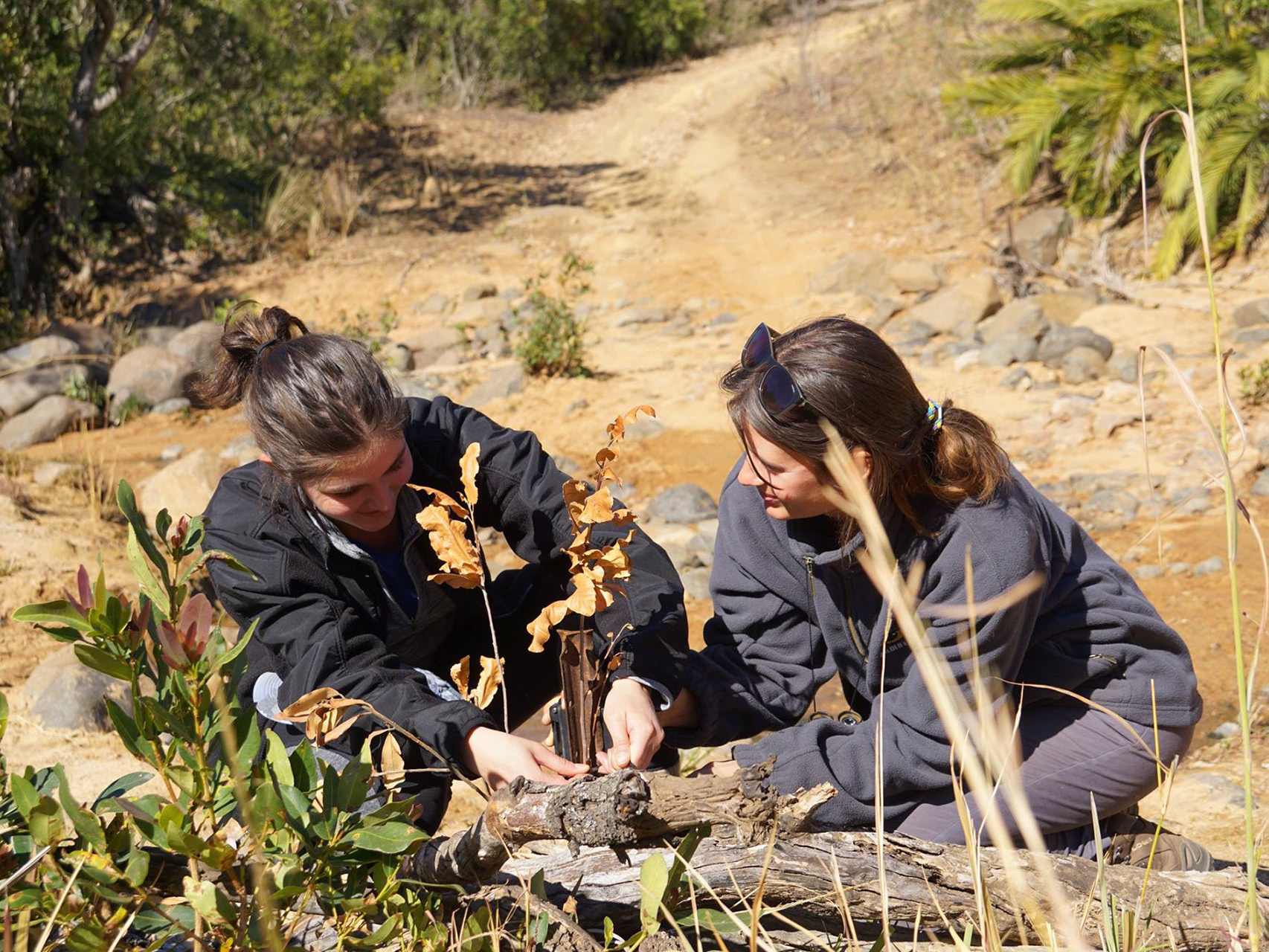Summary
In The New Yorker article “The Intelligent Plant,” Michael Pollan discusses the inconclusive scientific debate about whether plants are intelligent. In this piece, I reference Pollan’s essay when arguing why I believe blades of grass think and feel. I then present the best objection to my view, including Taiz’s opposition. I subsequently deliberate the best counterargument to this objection. Ultimately, I conclude that blades of grass think and feel since they appear to be active agents with intentions, emotions, consciousness, and memory.
Why I Believe Blades of Grass Think and Feel
Due to their sessile lifestyle, plants need to comprehend their immediate environment incredibly well as they must acquire their resources and defend themselves while remaining immobile. This way of life has led plants to acquire a highly developed sensory apparatus with 15-20 distinct senses, including five that parallel those of humans. Plant roots can sense and optimally respond to countless environmental variables, including gravity, light, temperature, water, nutrients, soil structure, toxins, herbivores, microbes, and chemical signals from other plants (Pollan, 4). This is far beyond our own sensory capacities. Hence, why do we continue to doubt the abilities of plants to think and feel? Although their cognitive capabilities are distributed differently than those in animals, plant behavior parallels animal behavior. Plants perceive, learn, and also adapt their behavior in response to innumerable biotic and abiotic factors. For instance, roots about to confront a toxin or obstacle change their course before they make contact (Pollan, 8). This reveals that plants actively make decisions about their future.
Dodder Vines. Image licensed from Adobe Stock.
Plants also appear to have some form of consciousness and reasoning. After choosing a host, dodder vines implement a cost-benefit analysis before deciding how many coils they should invest. The more nutrients they assess in a host, the more coils they use (Pollan, 18). This supports the notion that plants, including blades of grass, have preferences and goal-directed actions. They also appear to have memory as exposed by Gagliano’s habituation experiment, where she drops Mimosa leaves 60 times in a conditioning session. By the end, instead of closing, the leaves remain open and disregard the drop stimulus. After 28 days, the leaves continue to discount the stimulus and stay open, implying that they remember Gagliano’s conditioning (Pollan, 13). Additionally, plants can recognize themselves and other individuals and can even differentiate between kin and strangers. Plants from the same family are more receptive to each other’s chemical signals and often share more resources than strangers (Pollan, 8). Doesn’t this reflect a type of social consciousness? I argue that it does. As Mancuso claims, if plants are conscious, then they must also feel pain and stress. How else have they been able to react to danger and to survive for eons? When plants appear stressed, they emit ethylene, which is used as an anesthetic for animals (Pollan, 20). By doing so, they are likely trying to alleviate pain or discomfort. Consequently, plants seem to be conscious organisms that feel, think, and know their place within their environment. They also have a complex communication system. They adjust their behavior according to the signals they receive. For instance, a plant being infected or chewed by an insect will release a warning signal to nearby plants who subsequently produce toxins to deter or poison predators (Pollan, 9). Plants are estimated to have access to 3,000 chemicals as opposed to a human’s 700 (Pollan, 15). All of these cognitive abilities suggest that blades of grass not only feel, but also think and reason. Now that I have presented why I believe blades of grass think and feel, I will discuss the best objection to my view, including Taiz’s opposition.
Taiz's Opposition
Although plants seem to behave intelligently, these behaviors have yet to be reinforced by familiar genetic and biochemical mechanisms. In other words, plants do not have synapses, neurons, or brains. Furthermore, even though they have short- and long-term electrical signals, their underlying system is quite distinct from ours and is nowhere near as complex. Therefore, although plants may exhibit intelligent behavior, this does not mean they are intelligent creatures who feel and think. Instead, these seemingly sophisticated behaviors are likely based on innate abilities that provoke them to respond to environmental variables in a reflexive manner. Many scientists argue that, without a centralized command center (i.e. a brain), plants cannot perform intrinsic mental actions, such as abstract thought, reasoning, and judgment (Pollan, 15). Thus, in contrast to higher-order organisms whose behavior is rooted in learning, plant intelligent behavior seems to be adaptive. Plant physiologist, Lincoln Taiz, distinguishes two types of behavioral changes: one that occurs within an organism’s lifetime and one that transpires across generations. He argues that plants fall into the latter category and that their seemingly intentional behaviors, such as the dodder vine example mentioned above, emerge solely from instinct. Ultimately, Taiz claims that these behaviors do not require intentionality or brain-like conceptions. Instead, they seem to parallel the behavior of lower-order organisms, such as insects, who cannot feel or think (Pollan, 21). Although plants appear to have complex communication and information processing systems, Taiz reveals that “the plant response is based entirely on the net flow of auxin and other chemical signals” (Pollan, 23). No thought goes into their actions. Instead, their behaviors are just a response to chemical signals in the same way that cells communicate and respond to one another. Not only do plants not think, but they also do not feel since they lack a brain which is a prerequisite to achieving higher-order mental capabilities. Taiz’s primary argument is that plants do not possess intelligence, although they may be capable of intelligent behavior in the same way that lower-order organisms and cells are. He further rejects the notion of plants having memory. Taiz negates Gagliano’s habituation experiment by arguing that the drop stimulus is not a relevant trigger as it does not occur in nature. He claims that the leaves stopped closing due to exhaustion rather than as a result of learning and conditioning (Pollan 14-15). Thus, the experiment is irrelevant. Ultimately, it appears that plants, including blades of grass, do not think or feel as they lack the underlying cognitive hardware to do so. Instead, it seems that their behavior is adaptive and has been selected for across generations. Now that I have discussed the best objection to my view, I will present the best counterargument to this objection.
Conclusion
Although plant behavior has yet to be explained by familiar genetic and biochemical mechanisms, plants evidently have some brain-like information processing. All species face existential hurdles but under entirely different circumstances. Brains appear to be ideal for mobile organisms but may be a constraint for sessile organisms who are more vulnerable to attack (Pollan, 22). Thus, plants may have developed different cognitive mechanisms to survive. Furthermore, there are countless ways for a brain to be arranged (e.g. human vs. octopus), so why is it so unlikely that there be various types of brain-like signaling systems? As Mancuso states, “our fetishization of neurons, as well as our tendency to equate behavior with mobility, keeps us from appreciating what plants do” (Pollan, 7). Plants have an underground network where nutrients and chemical signals are shared, making much of what they do imperceptible to us. They live on a significantly slower time scale, making it even more challenging for us to directly perceive their behaviors. More recently, the use of time-lapse videography has helped overcome this hurdle and supports my contention. A video of bean plants reaching toward a pole reveals that they may have consciousness and intentionality since they appear to locate the pole long before they hit it (Pollan, 20). Therefore, contrary to what Taiz claims, plants seem to have the ability to act beyond instinct. Although plant behavior may be a response to the net flow of certain chemicals, so is human behavior (Pollan, 23). It seems as if a centralized brain is not necessary to achieve intrinsic mental qualities. This point is reinforced by the fact that there is no central command inside the brain of some higher-order organisms, including octopuses. Thus, is a centralized control setup really necessary to achieve intelligence, pain perception, learning, and memory? Or is an organized network, such as the roots of plants, all that is required? I argue that a central command is not necessary as complex behavior can emerge in the absence of actual brains. For example, there are other ways to learn and store memory that don’t require neurons, such as in the case of immune cells that remember past experiences with pathogens. Thus, Taiz’s arguments may be inapplicable. In response to Taiz’s criticisms of her experiment, Gagliano states that (1) in animal-learning experiments, many artificial triggers, such as electric shock, are used, (2) 28 days is plenty of time for the plants to rejuvenate, and (3) if plants are solely instinctual creatures, then “how can they be adapted to something they have never experienced in the real world?” (Pollan, 14). Gagliano also noted that some of her plants learned faster than others. All of this reinforces the notion that plants are not solely instinctual beings, but have the capacity to think, reason, and learn. Plants are complex, innovative creatures that have been in existence for hundreds of millions of years. They comprise 99% of the Earth’s biomass. Wouldn’t they have developed cognitive mechanisms in response to their environment in ways that we can’t imagine? I think so. I believe our conception of how thoughts and feelings emerge must evolve. As Pollan states, life exists in a continuum as “we are all cut from the same fabric of nature” (23).
Reference
Pollan, M. (2013, December 15). The intelligent plant. The New Yorker. https://www.newyorker.com/magazine/2013/12/23/the-intelligent-plant


